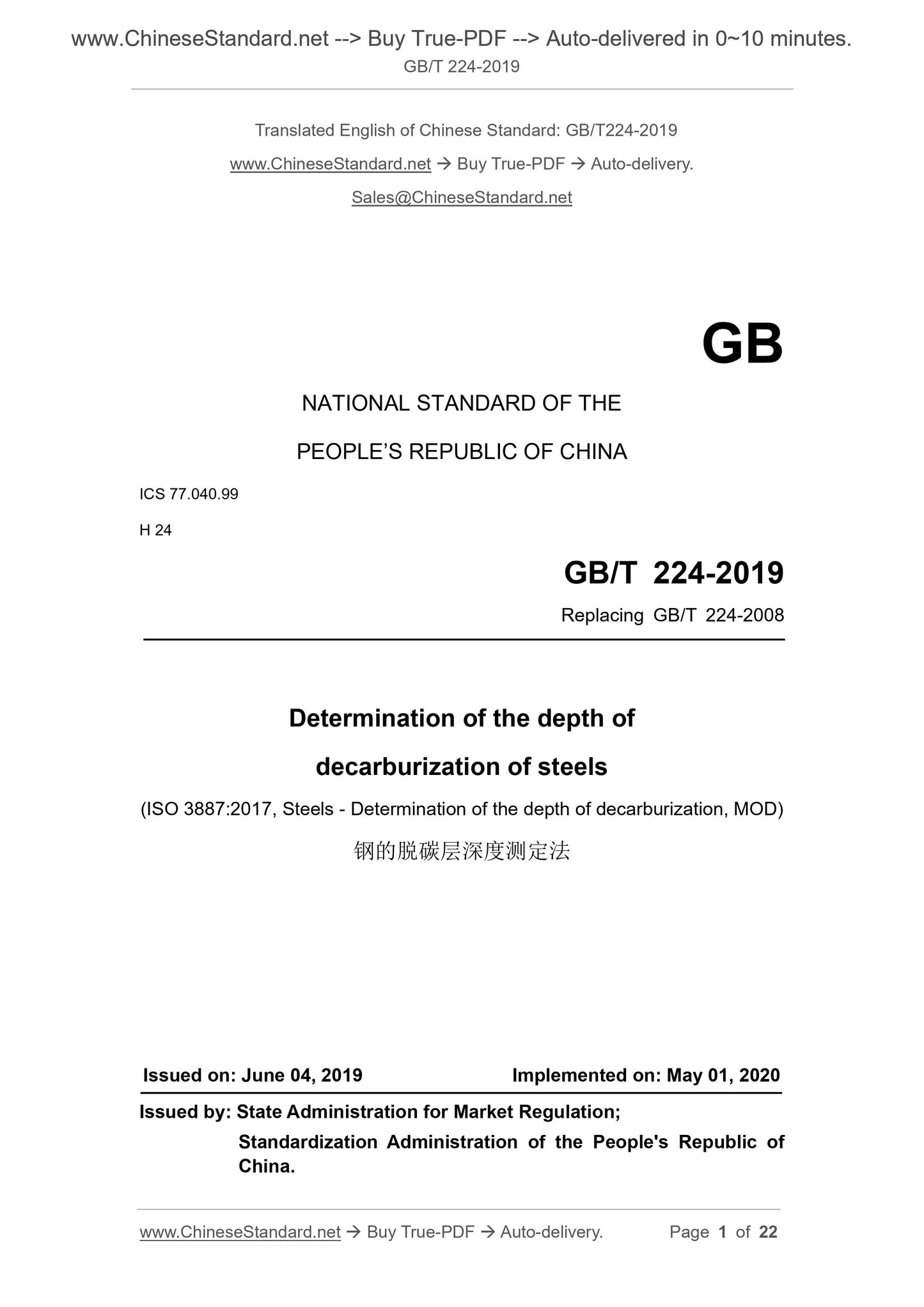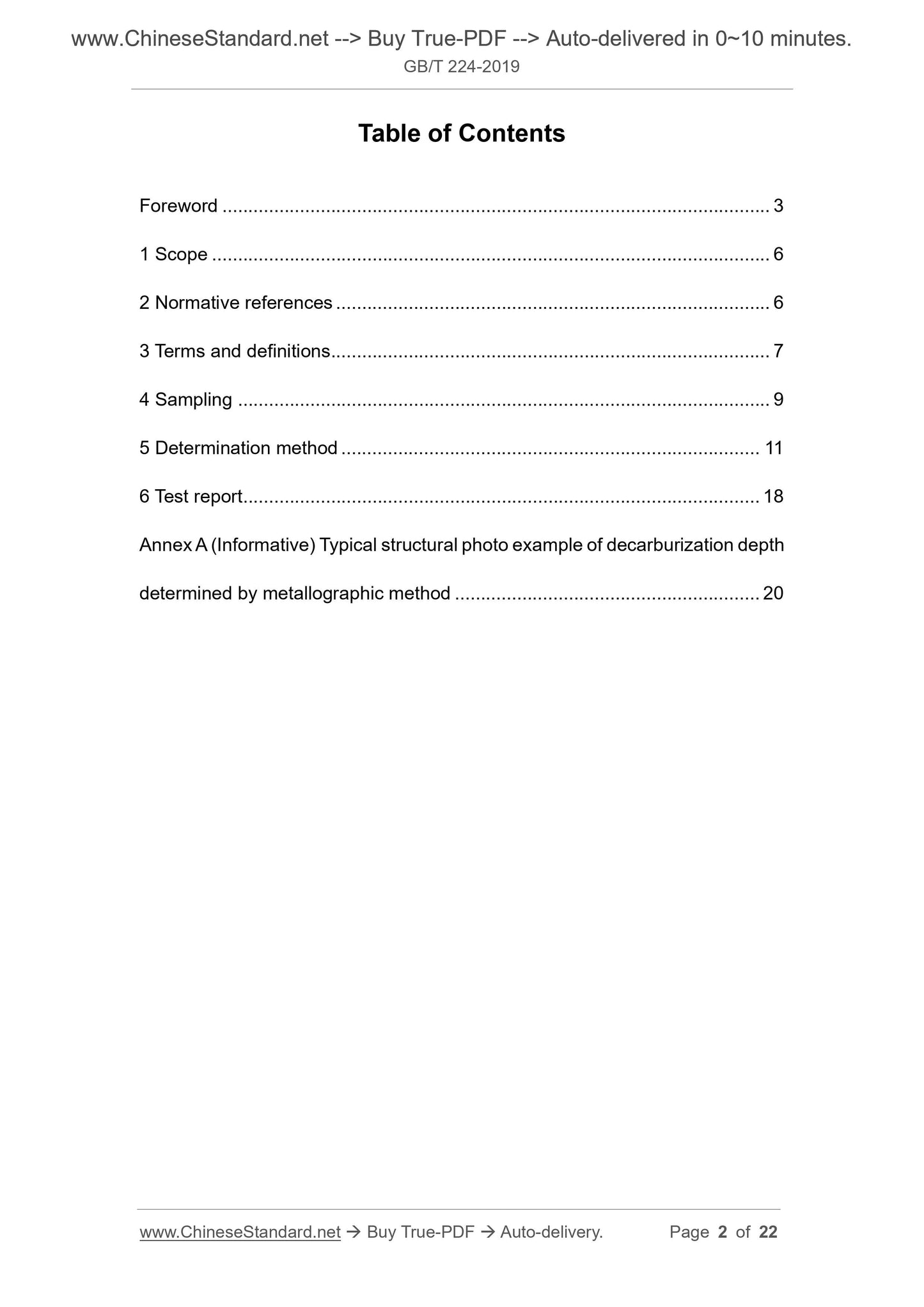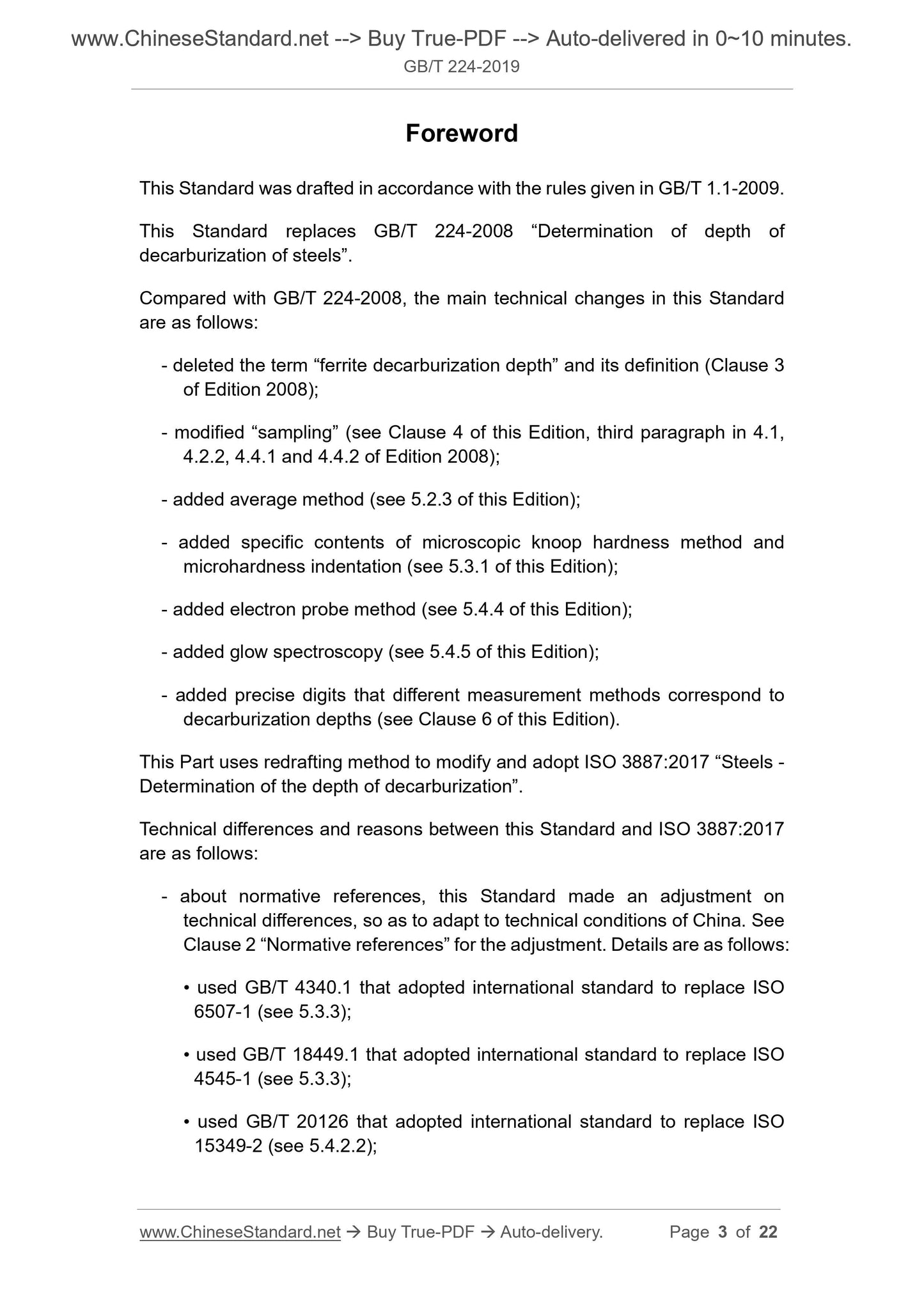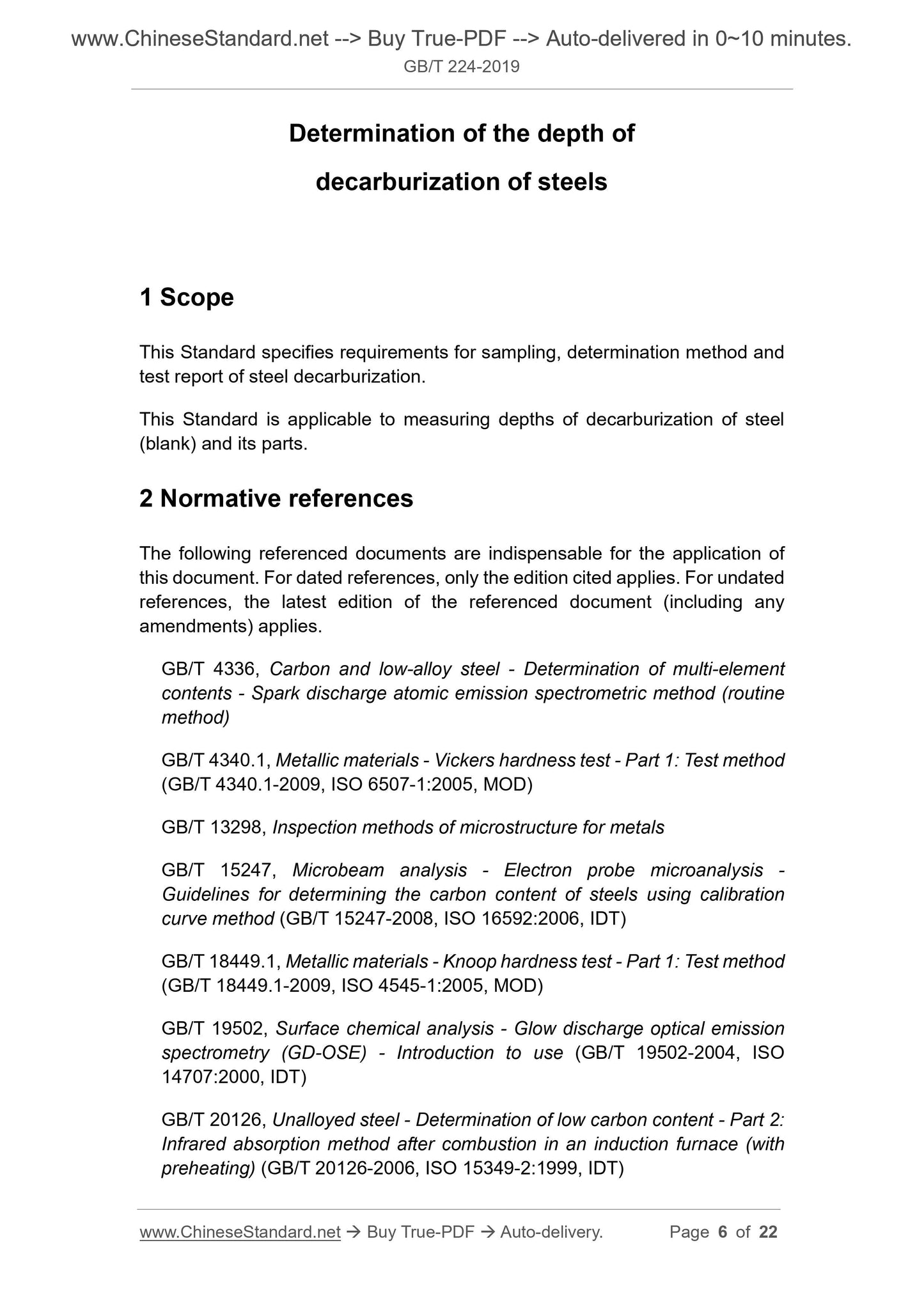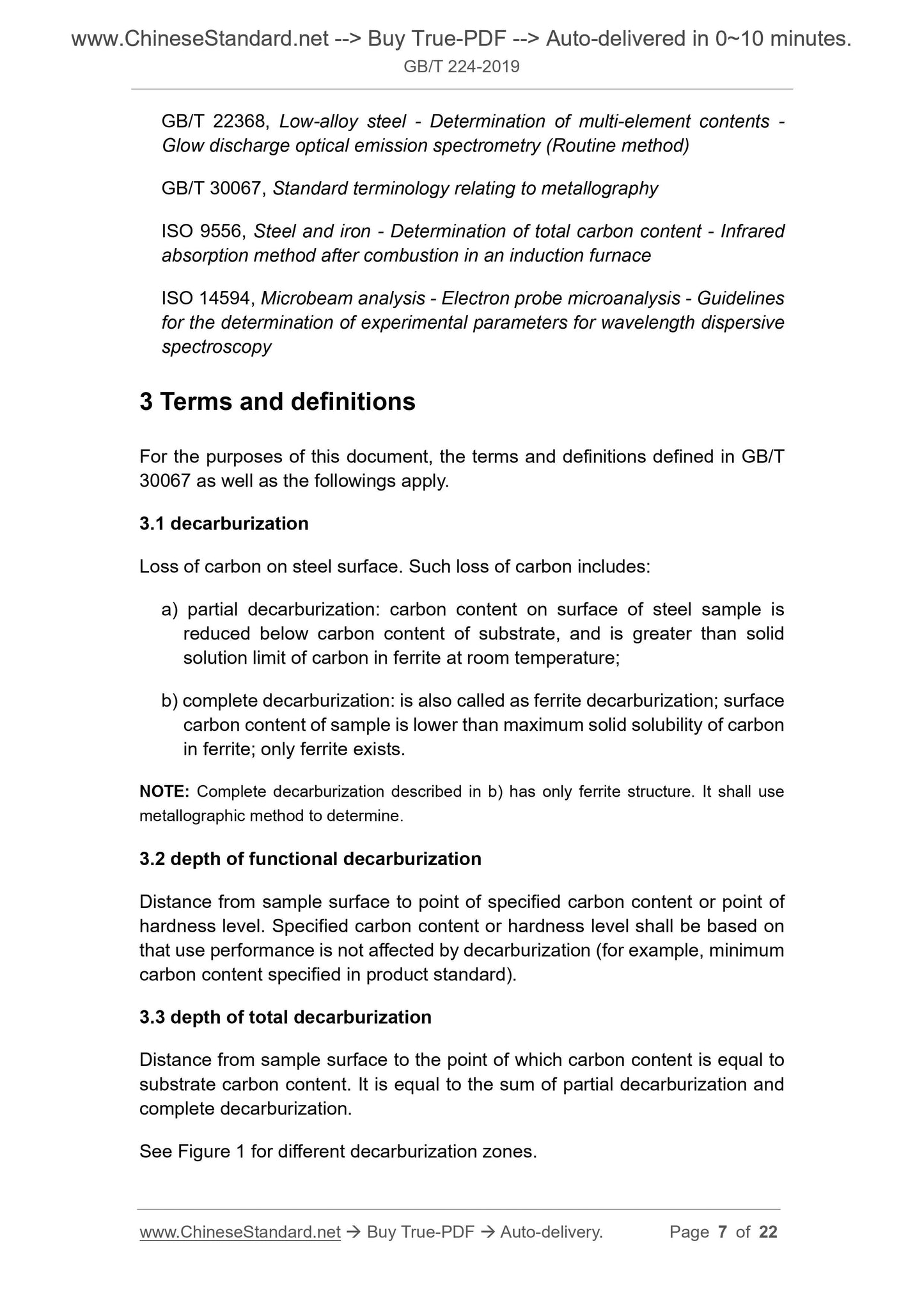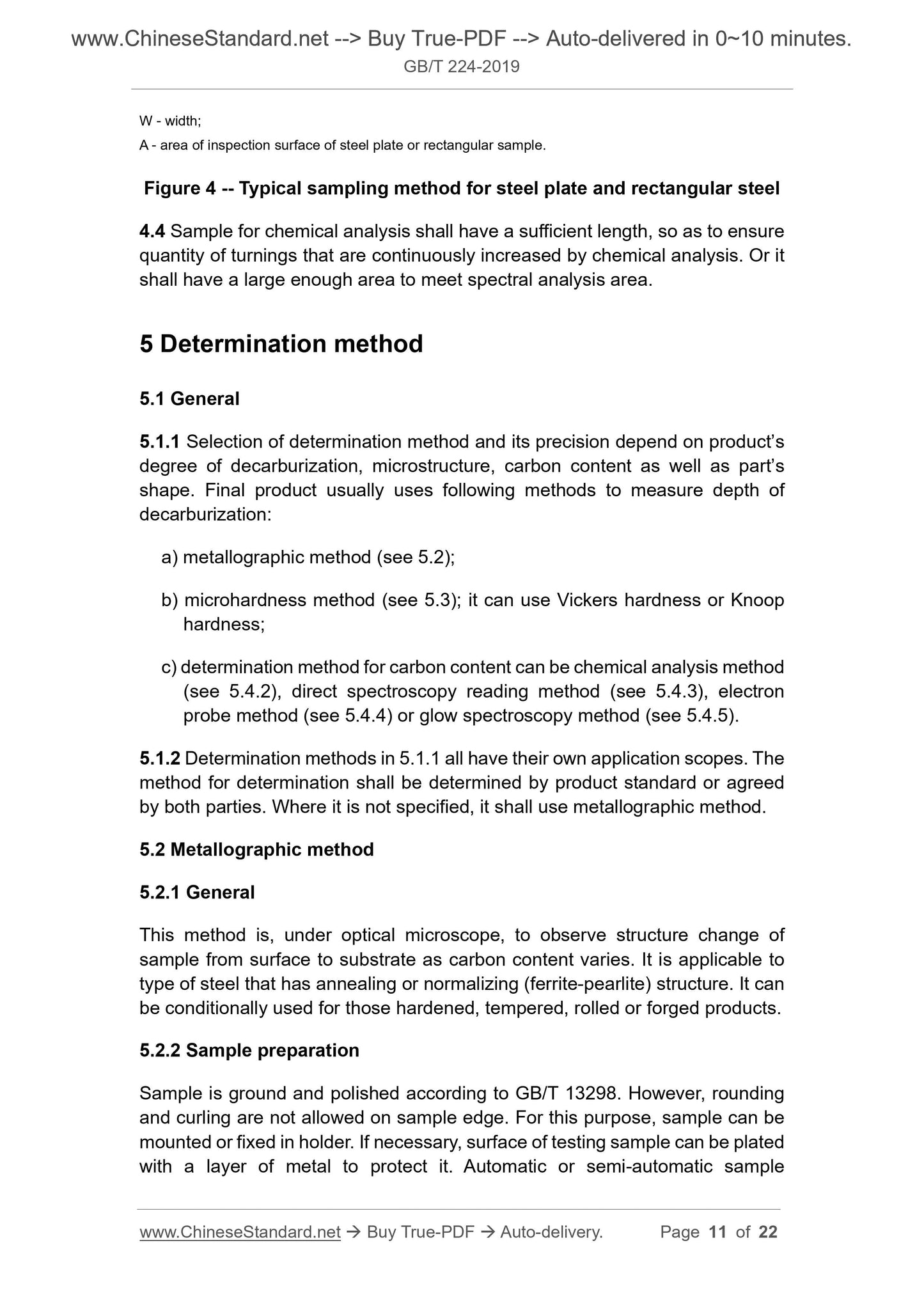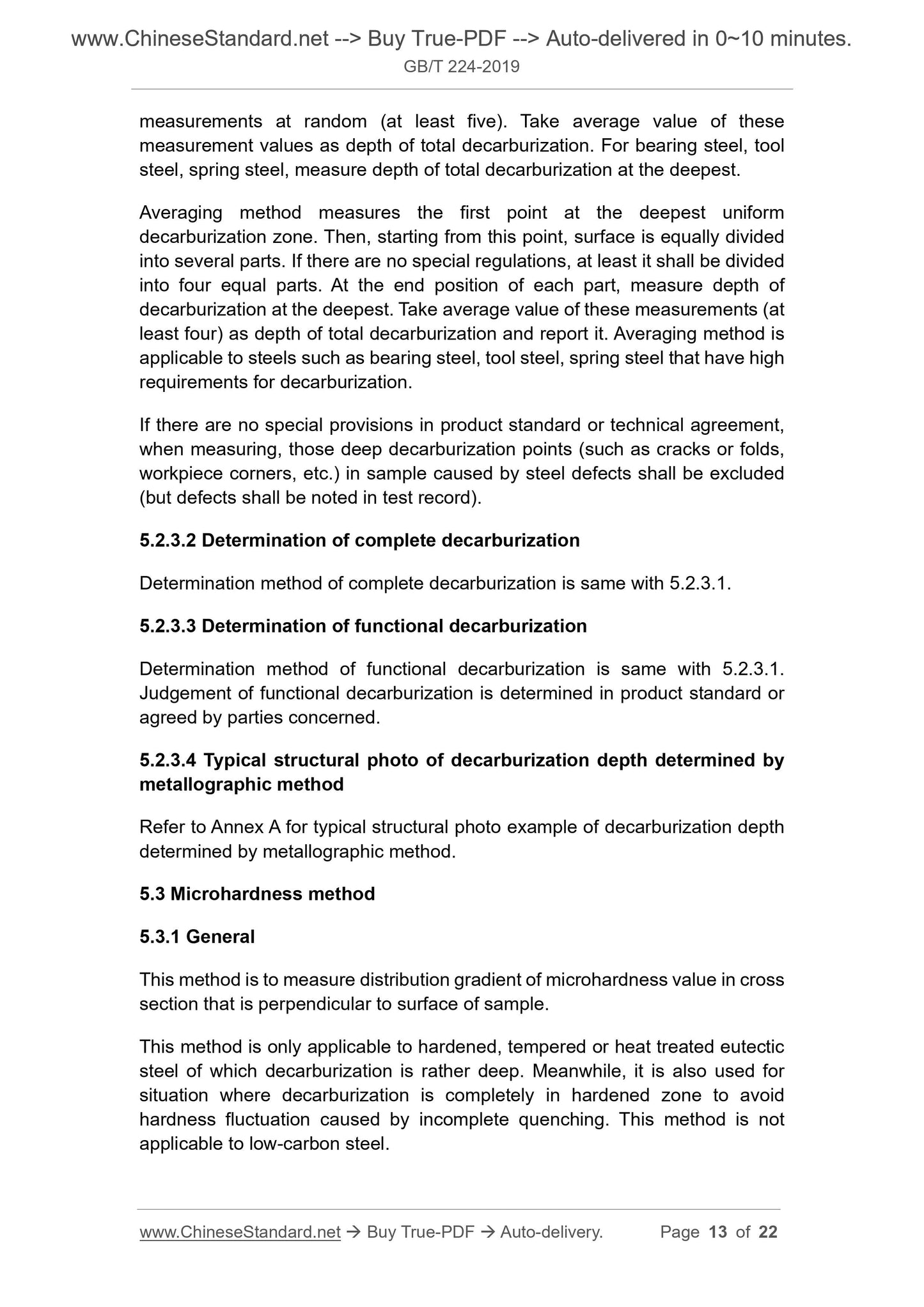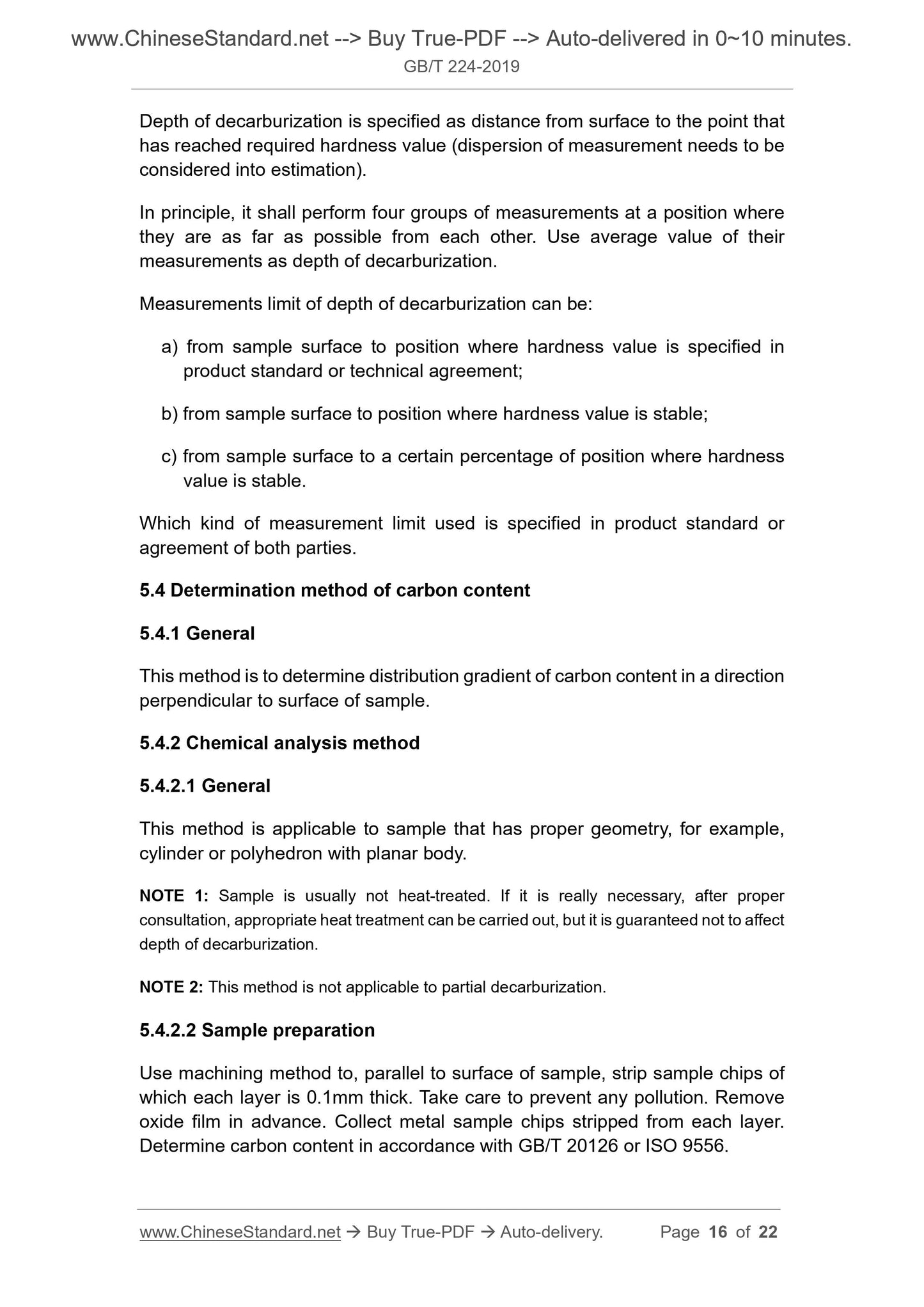1
/
of
9
www.ChineseStandard.us -- Field Test Asia Pte. Ltd.
GB/T 224-2019 English PDF (GB/T224-2019)
GB/T 224-2019 English PDF (GB/T224-2019)
Regular price
$145.00
Regular price
Sale price
$145.00
Unit price
/
per
Shipping calculated at checkout.
Couldn't load pickup availability
GB/T 224-2019: Determination of the depth of decarburization of steels
Delivery: 9 seconds. Download (and Email) true-PDF + Invoice.Get Quotation: Click GB/T 224-2019 (Self-service in 1-minute)
Newer / historical versions: GB/T 224-2019
Preview True-PDF
Scope
This Standard specifies requirements for sampling, determination method andtest report of steel decarburization.
This Standard is applicable to measuring depths of decarburization of steel
(blank) and its parts.
Basic Data
| Standard ID | GB/T 224-2019 (GB/T224-2019) |
| Description (Translated English) | Determination of the depth of decarburization of steels |
| Sector / Industry | National Standard (Recommended) |
| Classification of Chinese Standard | H24 |
| Classification of International Standard | 77.040.99 |
| Word Count Estimation | 18,184 |
| Date of Issue | 2019-06-04 |
| Date of Implementation | 2020-05-01 |
| Older Standard (superseded by this standard) | GB/T 224-2008 |
| Quoted Standard | GB/T 4336; GB/T 4340.1; GB/T 13298; GB/T 15247; GB/T 18449.1; GB/T 19502; GB/T 20126; GB/T 22368; GB/T 30067; ISO 9556; ISO 14594 |
| Adopted Standard | ISO 3887-2017, MOD |
| Issuing agency(ies) | State Administration for Market Regulation, China National Standardization Administration |
| Summary | This standard specifies the requirements for sampling, determination methods and test reports of the decarburized layer of steel. This standard applies to the determination of the depth of the decarburized layer of steel (bill) and its parts. |
Share
